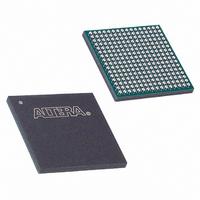EPM2210F256I5N Altera, EPM2210F256I5N Datasheet - Page 48

EPM2210F256I5N
Manufacturer Part Number
EPM2210F256I5N
Description
IC MAX II CPLD 2210 LE 256-FBGA
Manufacturer
Altera
Series
MAX® IIr
Specifications of EPM2210F256I5N
Programmable Type
In System Programmable
Delay Time Tpd(1) Max
7.0ns
Voltage Supply - Internal
2.5V, 3.3V
Number Of Logic Elements/blocks
2210
Number Of Macrocells
1700
Number Of I /o
204
Operating Temperature
-40°C ~ 100°C
Mounting Type
Surface Mount
Package / Case
256-FBGA
Voltage
2.5V, 3.3V
Memory Type
FLASH
Number Of Logic Elements/cells
2210
Cpld Type
FLASH
No. Of Macrocells
1700
No. Of I/o's
204
Propagation Delay
11.2ns
Global Clock Setup Time
1.2ns
Frequency
304MHz
Supply Voltage Range
3V To 3.6V
Rohs Compliant
Yes
Lead Free Status / RoHS Status
Lead free / RoHS Compliant
Features
-
Other names
544-2268
Available stocks
Company
Part Number
Manufacturer
Quantity
Price
Company:
Part Number:
EPM2210F256I5N
Manufacturer:
ALTERA
Quantity:
648
Part Number:
EPM2210F256I5N
Manufacturer:
ALTERA
Quantity:
20 000
3–6
Table 3–4. MAX II Device Family Programming Times
UFM Programming
In-System Programming Clamp
MAX II Device Handbook
Erase + Program (1 MHz)
Erase + Program (10 MHz)
Verify (1 MHz)
Verify (10 MHz)
Complete Program Cycle (1 MHz)
Complete Program Cycle (10 MHz)
f
f
Description
Table 3–4
execute the algorithm vectors in hardware. Software-based programming tools used
with download cables are slightly slower because of data processing and transfer
limitations.
The Quartus II software, with the use of POF, Jam, or JBC files, supports
programming of the user flash memory (UFM) block independent of the logic array
design pattern stored in the CFM block. This allows updating or reading UFM
contents through ISP without altering the current logic array design, or vice versa. By
default, these programming files and methods will program the entire flash memory
contents, which includes the CFM block and UFM contents. The stand-alone
embedded Jam STAPL player and Jam Byte-Code Player provides action commands
for programming or reading the entire flash memory (UFM and CFM together) or
each independently.
For more information, refer to the
chapter in the MAX II Device Handbook.
By default, the IEEE 1532 instruction used for entering ISP automatically tri-states all
I/O pins with weak pull-up resistors for the duration of the ISP sequence. However,
some systems may require certain pins on MAX II devices to maintain a specific DC
logic level during an in-field update. For these systems, an optional in-system
programming clamp instruction exists in MAX II circuitry to control I/O behavior
during the ISP sequence. The in-system programming clamp instruction enables the
device to sample and sustain the value on an output pin (an input pin would remain
tri-stated if sampled) or to explicitly set a logic high, logic low, or tri-state value on
any pin. Setting these options is controlled on an individual pin basis using the
Quartus II software.
For more information, refer to the
chapter in the MAX II Device Handbook.
shows the programming times for MAX II devices using in-circuit testers to
EPM240G
EPM240Z
EPM240
1.72
1.65
0.09
0.01
1.81
1.66
EPM570G
EPM570Z
EPM570
2.16
1.99
0.17
0.02
2.33
2.01
Using Jam STAPL for ISP via an Embedded Processor
Real-Time ISP and ISP Clamp for MAX II Devices
EPM1270G
EPM1270
2.90
2.58
0.30
0.03
3.20
2.61
Chapter 3: JTAG and In-System Programmability
EPM2210G
EPM2210
3.92
3.40
0.49
0.05
4.41
3.45
© October 2008 Altera Corporation
In System Programmability
Unit
sec
sec
sec
sec
sec
sec














